Red-tailed Hawks are common and widespread throughout most of North America but I typically find them to be wary and difficult subjects to approach and photograph. However we did have some pretty good luck with them a couple of mornings this past week in western Utah.
Canon 7D, 1/2000, f/6.3, EV -0.67, ISO 640, 500 f/4, 1.4 tc
We found them deep in a canyon of one of the many “island mountain ranges” of Utah’s west desert. There were at least a half-dozen of them hanging out together, many of them juveniles. The lighting at the bottom of the canyon in early morning was often filtered and spotty and the perches were usually dead trees with lots of branches going every which way so the backgrounds and settings were typically busy. This is one of the cleaner shots I got of one on a perch in the canyon bottom.
Canon 7D, 1/2000, f/6.3, ISO 640,EV -1.00, 500 f/4
This one chose a juniper perch which would provide a clean background for a takeoff shot so I tried to leave room in front of the bird just in case. I was looking slightly down on the hawk when it launched and I liked the good look at the topside of the bird in this shot but do wish it had been looking more my way. But then I probably wouldn’t have any light on the eye – sometimes you just can’t win…
Canon 7D, 1/1250, f/6.3, ISO 640 EV +0.33, 500 f/4
Shooting these hawks in flight was very frustrating! Each morning they would pretty much stay perched at the bottom of the canyon until about 9 AM, then when the breeze picked up they would begin to soar up and down the canyon. But by 9 AM the sun is starting to get high enough that it becomes very difficult to get any light under the wings. They would often come very close to us (you’ll notice in my techs that I’ve taken my teleconverter off for many of these shots) but I was shooting from inside my pickup. Imagine the frustration when one of these birds would fly within 40-50 feet of me but it was at the wrong angle to get the shot through the vehicle window. That happened more times than I want to remember. Occasionally I would get out of my truck and hand hold the lens but shooting a very heavy 500mm lens is physically demanding and it wouldn’t take long before muscle fatigue caused my arms to shake – not a good thing when you’re effectively shooting at 1120 mm much of the time. Couldn’t use the tripod because the hawks would hang around for a couple of minutes then go on their merry way down or up canyon so I was constantly on the move. Immensely frustrating and incredibly fun at the same time – bird photographers will understand the apparent contradiction of that statement.
Canon 7D, 1/400, f/14, ISO 640 EV -0.67, 500 f/4
I was photographing these two birds (I believe them to be juvenile siblings) when something interesting happened. I had to take off the teleconverter to get them both in the frame and I was fiddling with my settings to try to get enough depth of field to get them both sharp (notice I’m at f/14 here). I didn’t fully succeed with the hawk on the left. Suddenly the bird on the left, who seemed lethargic and sleepy, became more animated.
Canon 7D, 1/1250, f/7.1, ISO 640 EV -0.67, 500 f/4
It looked like it was choking or had what humans often call the “dry heaves”. I immediately knew that it was about to hack up a pellet so I quickly changed to f/7.1 and started firing off bursts in hopes of catching the moment that the pellet came out. I took a lot of shots in the next 20 seconds or so (the burst rate of the 7D is 8 frames/second so you can imagine that I burned up a lot of pixels in that short time). I’ve cropped pretty tightly in the next two images to hopefully give a closer and better look at the pellet.
Canon 7D, 1/1600, f/7.1, ISO 640 EV -0.67, 500 f/4
Here the pellet is just beginning to emerge.
Canon 7D, 1/1250, f/7.1, ISO 640 EV -0.67, 500 f/4
And in this shot the pellet (sometimes called a bolus) has just left the mouth. I remember seeing it fall out of frame at the bottom through the viewfinder but these are the only two shots that show the pellet. If you’re interested in the biology of pellet casting I’ve photographed a Northern Harrier expelling a pellet and explained why many birds do it here.
Canon 7D, 1/800, f/6.3, ISO 500 EV +0.67, 500 f/4
Another part of the frustration of those two mornings was getting autofocus to “lock on” to the birds when the canyon walls in the background were close to the hawks in flight. These birds were often flying very close to those canyon walls and in those conditions autofocus wants to lock on to the background instead of the bird. It is immensely difficult to get a fast-moving bird sharp in flight with a very contrasty background so close to the bird, which is aggravating because to me a background like that is so much more interesting than just blue sky. In this shot the canyon wall was much further away so autofocus was able to lock on to the bird. I like the unusual look at the topside of this soaring hawk but I’m not particularly fond of the tan diagonal streak in the background.
Canon 7D, 1/1600, f/6.3, ISO 640, EV +1.00, 500 f/4, 1.4 tc
I enjoy this image because of the direct look back at me I got from the hawk and because there’s some clouds to break up the blue sky background and add some interest.
Canon 7D, 1/1600, f/6.3, ISO 640, EV -0.33, 500 f/4, 1.4 tc
This dead tree is typical of the perches these birds would use near the bottom of the canyon. The lichens on the branches add some interest and color but the background is quite busy.
I’ve seldom had as much fun shooting birds in flight as I did with these red-tails even though I didn’t get any truly great shots. It was a huge challenge and very exciting. Listening to their calls echoing off the canyon walls, watching their play-fighting and incredibly acrobatic aerial displays and me racing up and down the canyon in my pickup in anticipation of where they’d be close to the road next – all made for an unforgettable couple of mornings. And add to all that the fact that one morning a Prairie Falcon joined into the mix and skirmished in a friendly manner with the red-tails for quite a while. Truly magical to watch.
Ron


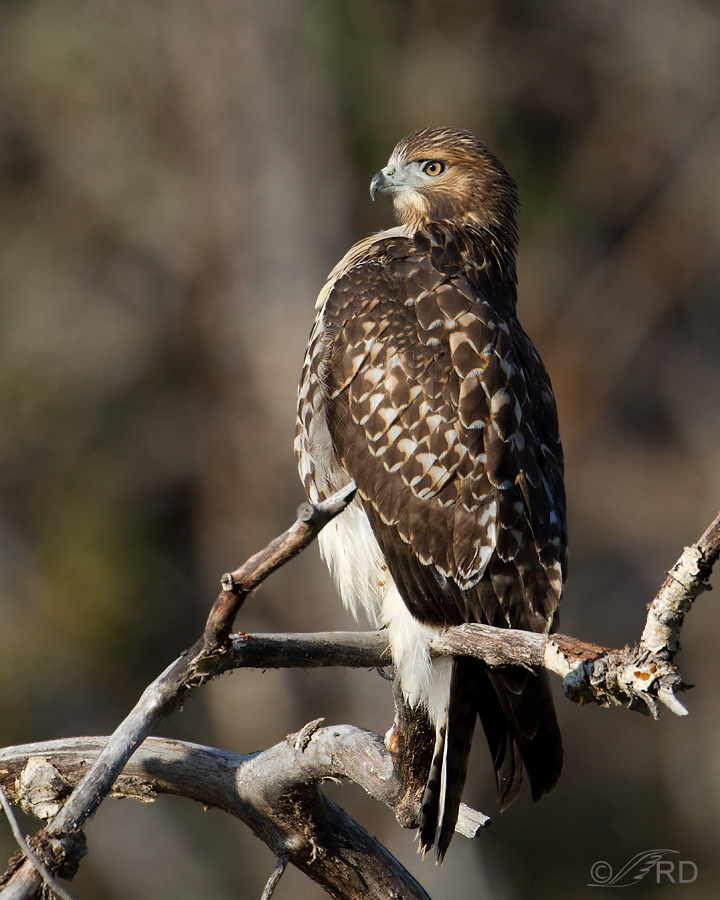

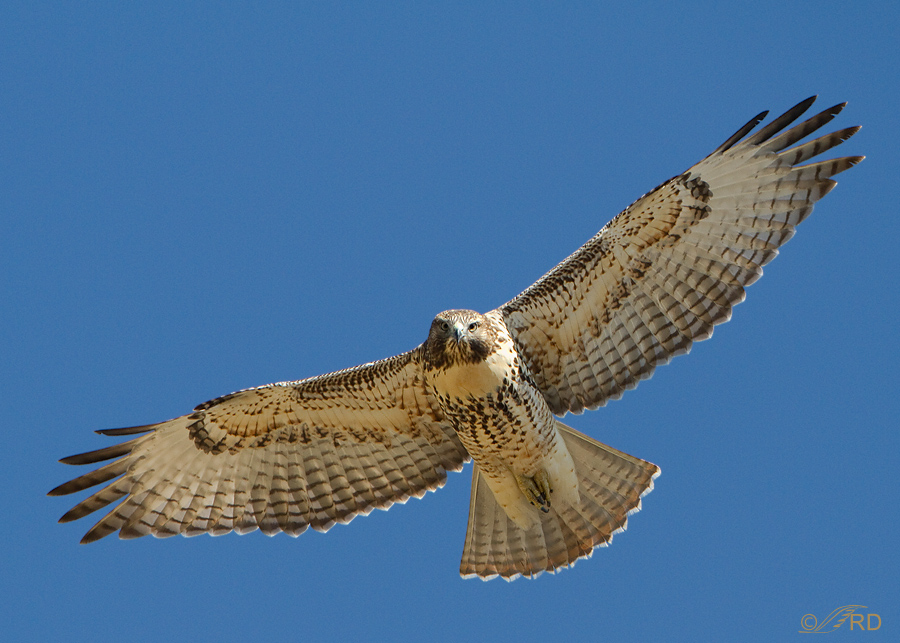
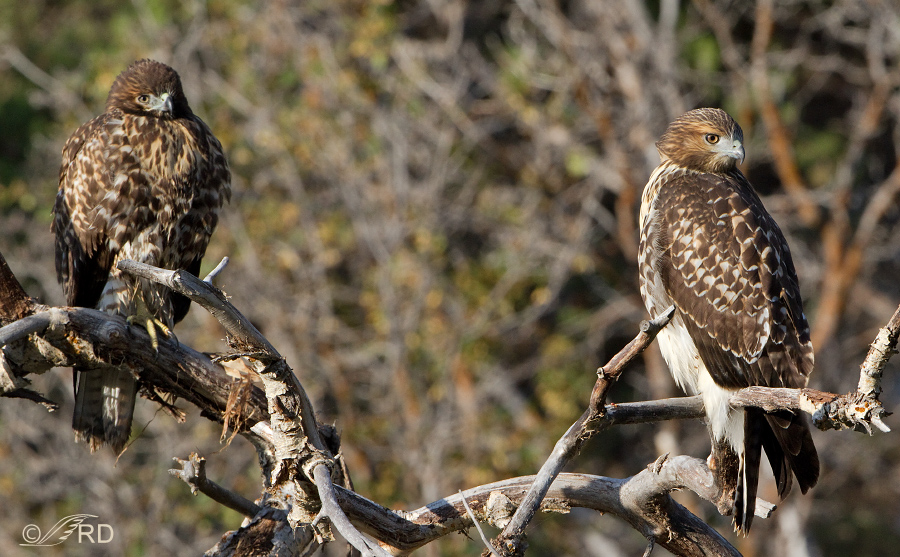
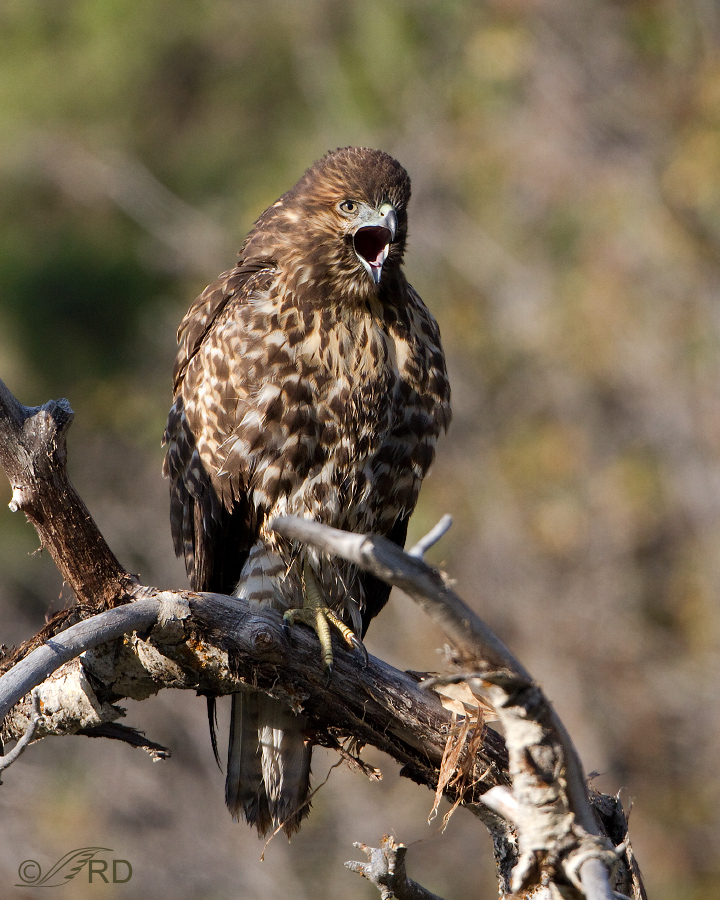
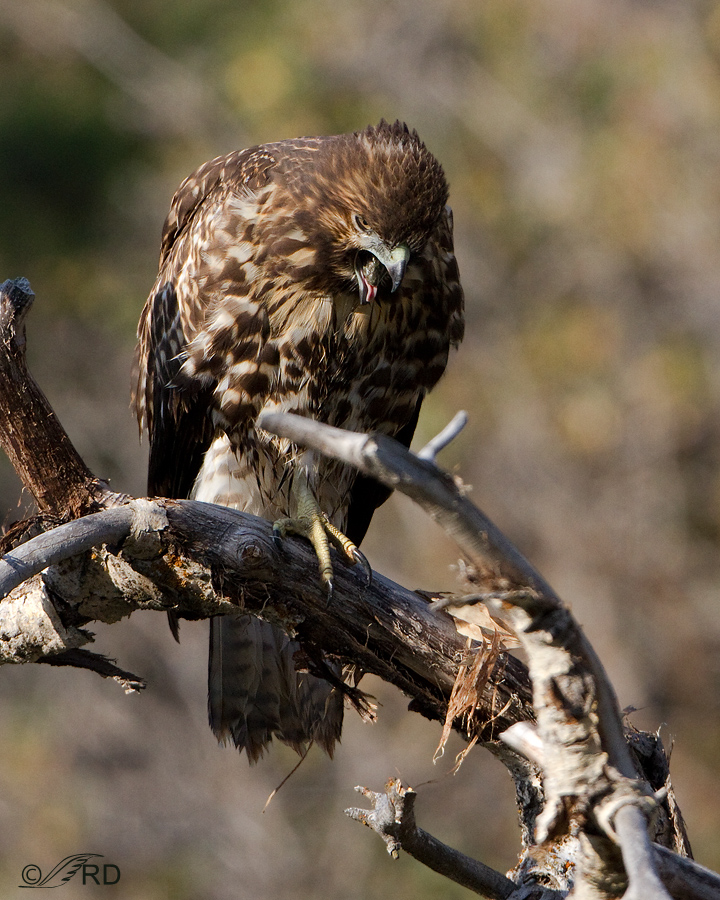
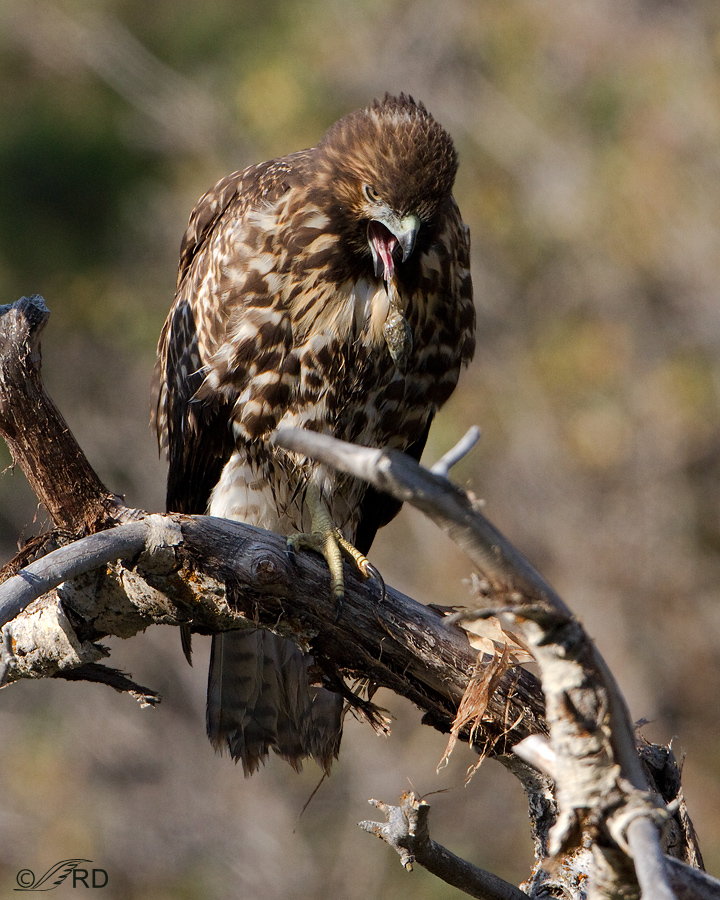

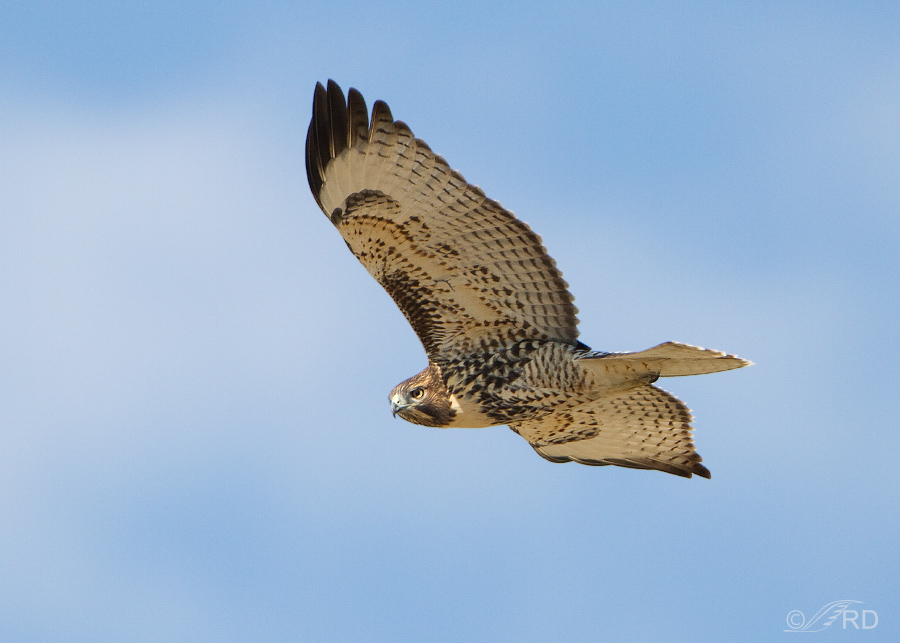
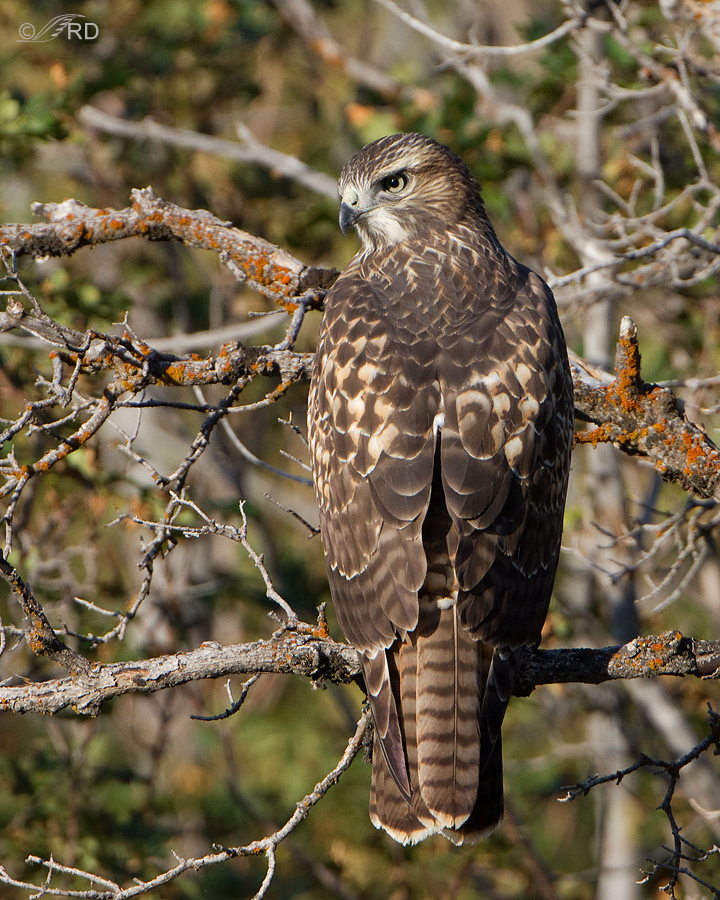
Stumbled across this photoblog recently. I have worked in the West Desert for the last 5+ years researching raptors and have to say these photos are fantastic. Thanks for sharing with the public. Steve (Conservation Director, HawkWatch International)
Thanks very much, Steve. I’ll bet you’ve spent some time out there with Mike and Bryce. I love the work you folks do and follow it as closely as I can.
Hi Ron,
These are AMAZING photos. This is what I keep trying mine to look like. I have a Nikon D90, with a 18-270mm lens. For the times that I am fortunate enough to photograph these beautiful birds, my photos never look the way I expect them too. And it’s very disappointing. Because as you said & know, it’s not easy to begin with to get these (or any) birds, in sharp while flying. If you have the chance, can you please email me. Thank you.
Thanks a lot, Veronica. You can use the contact form at the top of this page if you like.
Ron,
Wonderful pictures and comments to go along, sounds like a really cool and interesting canyon. Excellent detail on all the pictures.
Jim
Thank you Craig. Sometimes I think I blather on too long in some of these posts. Nice to get your feedback that you enjoyed the dialogue.
Beautiful images, thanks for posting and for the interesting and informative dialog
These are aweinspiringly beautiful. Thank you. Lots.